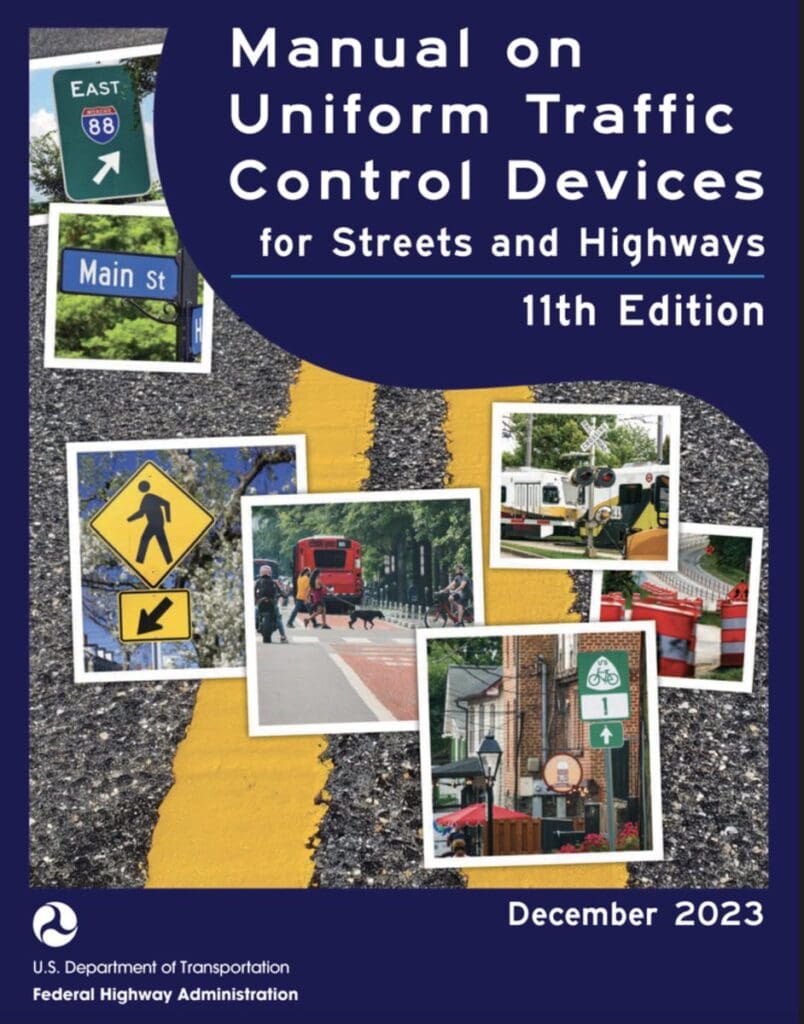Feds Announce New Street Manual, It’s Better But Not Enough

Safe streets advocates have often been told “no – we can’t change that” by a traffic engineer relying on the federally approved Manual of Uniform Traffic Control Devices (MUTCD). That’s why the federal government received tens of thousands of “Manual of Uniform Traffic Control Devices (MUTCD) update comments when it proposed updating the Manual. The status quo is a failure. The dramatic increase in pedestrian deaths, falling inequitably on Black and low income communities, is the tragic evidence.
Today, the Manual was updated and released. We are still intently examining the document and talking to our engineering and planning friends to understand what it means.
Here is our initial reaction, both positive and negative:
You were heard. The MUTCD update is undoubtedly better than its predecessor and what was proposed almost three years ago, due in large part to public demand for change:
- Speed limits should now be based on the entire context of the roadway, particularly where people are present, and not solely based on the speed of users (the dangerous “85th percentile rule” that raised the speed limit in response to speeding).
- Protection of vulnerable users is a priority, and the target pedestrian user is no longer assumed to be a “reasonable and prudent individual who is alert and attentive.” The prior language was an invitation to victim-blaming.
- Colored lanes are now allowed for bike and bus lanes (although with some unneeded restrictions).
- Crosswalks and signals are somewhat easier to justify.
The changes don’t meet the challenge. You should feel great that your voices created change, but the changes are insufficient given the pedestrian safety crisis:
- The 85th percentile speed of actual users can still be used as a factor in setting speeds, which in the hands of vehicle-first planners will certainly be misused.
- While colored lanes and some street art is okay, colored crosswalks are discouraged, in part because, we kid you not, pedestrians might look at the art.
- The Manual still encourages engineers to wait for a certain number of deaths before approving a signal or crosswalk.
There is more work to be done!
So what is our takeaway so far? The MUTCD update was all about whether we will prioritize moving cars or prioritize moving people. The new Manual moves in our direction but not far enough. We should feel proud about our collective work and appreciate where USDOT acknowledged our voices. In the hands of compassionate and competent leaders and engineers, the new manual will make a difference in saving lives and creating more humane and inclusive communities.
That won’t necessarily happen unless we keep up the pressure. We need to keep working to demonstrate the public demand for better streets and to hold leadership at every level of government accountable to those community values.
There will be more regular updates of the MUTCD, but we should not wait for that. The immediate work is to push local decision makers to use the new flexibility in the MUTCD to design streets that save lives. “The Manual does not allow that” should not be an acceptable answer anymore. America Walks is here to help you in that work.
While we view the MUTCD update as a significant positive step towards better communities, it is ultimately a transitional document, not a transformational one. We will keep you updated on what we find in the MUTCD. And we will of course, keep sharing the opportunities where you can make a difference in your community.